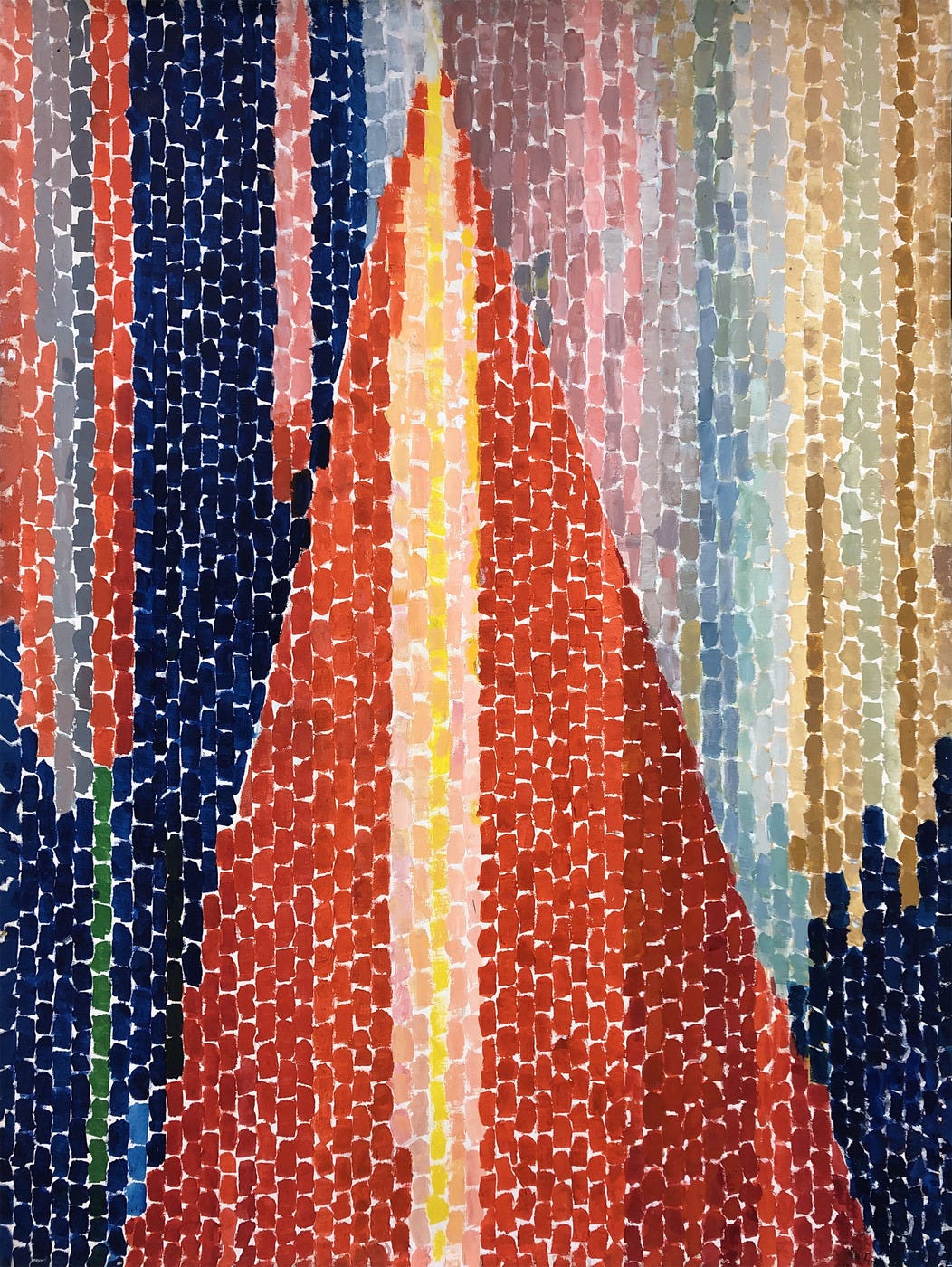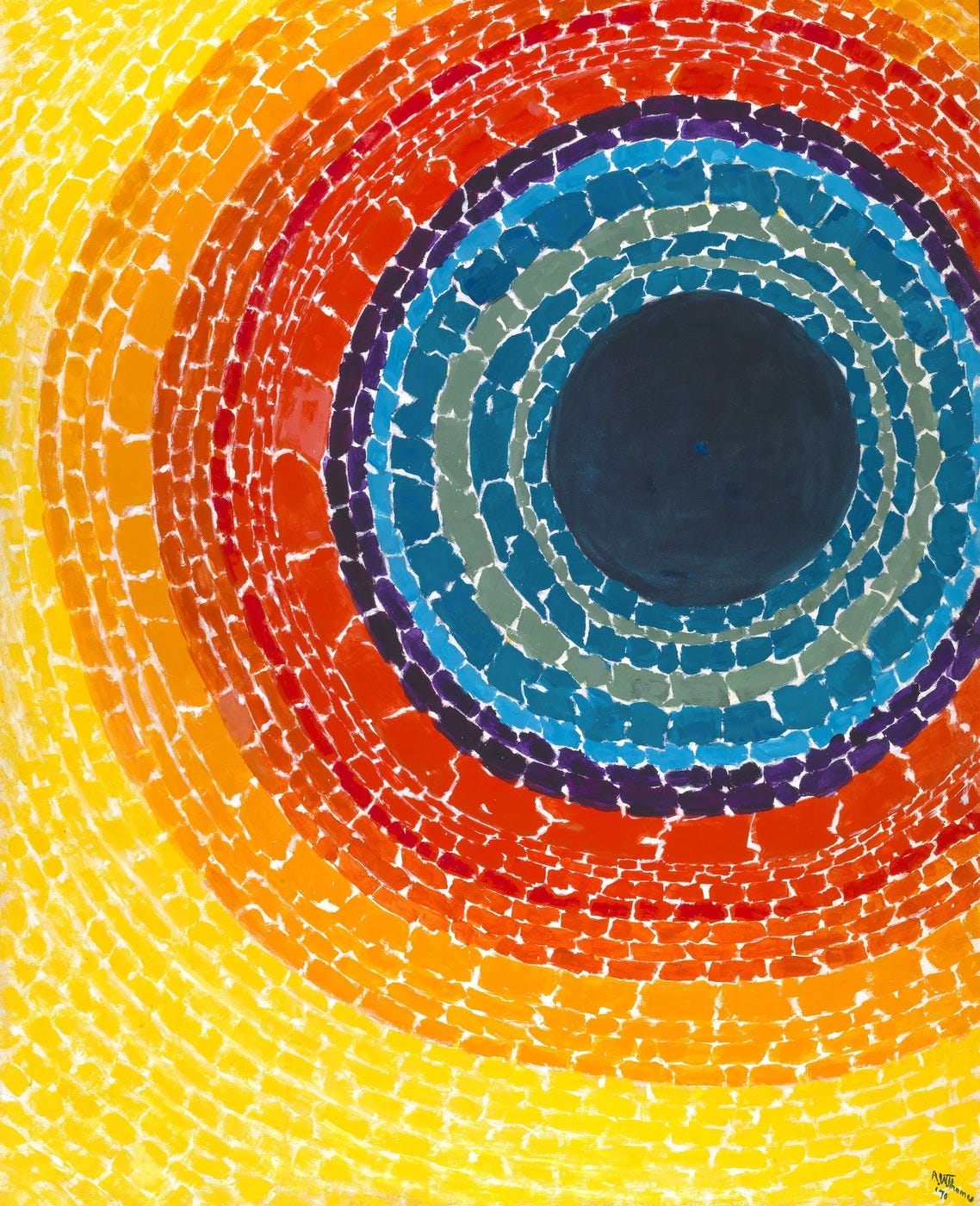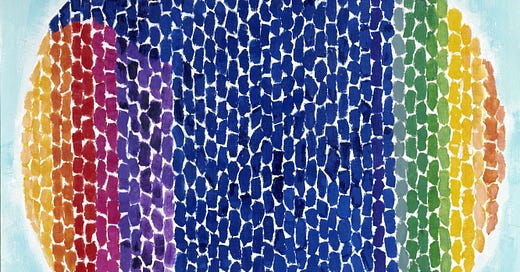How Space Exploration Inspired a Late-Blooming Painter
Artist Alma Thomas was in her 70s when she developed her signature style

This past weekend I headed to the Smithsonian American Art Museum to see an exhibit by the abstract painter Alma Thomas. I had seen a few of her paintings online—of colorful concentric circles and flowers—and wanted to see more. When I got to the exhibit, “Composing Color: Paintings by Alma Thomas,” I was surprised to see that many of artist’s images were inspired by space exploration.
Thomas was born in 1891 in Columbus, Georgia, in what she called the “horse and buggy days” and only began a series inspired by space when she was in her late 70s. Her transformation into an abstract artist with a signature style who captured NASA’s journeys is an amazing story.
When Thomas was in her teens, her family moved from Georgia to Washington, D.C.—to get away from the Jim Crow South. In 1924, she was the first student to graduate from the art department at Howard University. She taught public school for 35 years at Shaw Junior High in D.C. But it was only after her retirement in 1960 that she developed her signature painting style. She was in her mid-70s when she saw light playing amidst the leaves of a Holly tree and started painting in what is called Alma Stripes, putting dots of color that look like tiles on paper.

Thomas moved from nature to space as a key inspiration in 1969—and created about a dozen paintings of the subject over the next four years. She was fascinated by the Apollo missions that took place in the 1960s and 1970s. “Today not only can our great scientists send astronauts to and from the moon to photograph its surface and bring back samples of rocks and other materials, but through the medium of color television all can actually see and experience the thrill of these adventures,” she said in a 1972 artist statement. “These phenomena set my creativity in motion.”
The three images from her space series that captivated me were all made in 1970. The first, called “Snoopy—Early Sun Display on Earth,” was likely inspired by Earthrise, the image of our planet rising above the surface of the moon. That photo was captured from the Apollo 10 lunar module, which was nicknamed “Snoopy” as it flew around the moon to “snoop” for a possible landing site. Thomas’s painting shows a mostly dark blue Earth with splashes of color set against a light blue background. The second painting, called “Blast Off,” is of a rocket ship launch. That work features a large red triangle that seems to represent a fiery take off from Earth. The third painting, “The Eclipse,” was the last in her series and was inspired by the total solar eclipse that took place on March 7, 1970. (Such an event will be visible again from the U.S. on this April 8.) In the work, colorful rings surround a dark circle that represents the moon passing between the sun and the Earth.

Thomas saw huge changes in technology from her birth in the 19th century until her death in 1978 at age 86, and she captured the discoveries that resulted from those innovations in her art. She created her paintings despite arthritis in her later years. At 80, she had a show at the Corcoran Gallery of Art in D.C. and she became the first Black woman to have a solo exhibition at the Whitney Museum of American Art. During her long life, the institutions that showcased art also went through huge changes from when she was a child. “One of the things we couldn’t do was go into museums, let alone think of hanging our pictures there,” she said around the time of her Whitney show. “My, times have changed. Just look at me now.”
Suggested Video Viewing:
“Composing Color: Paintings by Alma Thomas” (There’s a good 5-minute clip on Thomas at the bottom of the page.)
“Alma Thomas: Your New Favorite Artist”
If you have any feedback, I’d love to hear about it in the comments.
And if you know anyone else who might like the Field and Lab newsletter, please share it.
Thanks for reading,
Joe





Oh wow! What an incredible story and beautiful works! Thanks for sharing, Joe!
This is my favorite so far! What a great story and journey. Beautiful!!